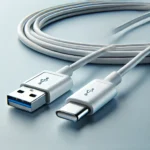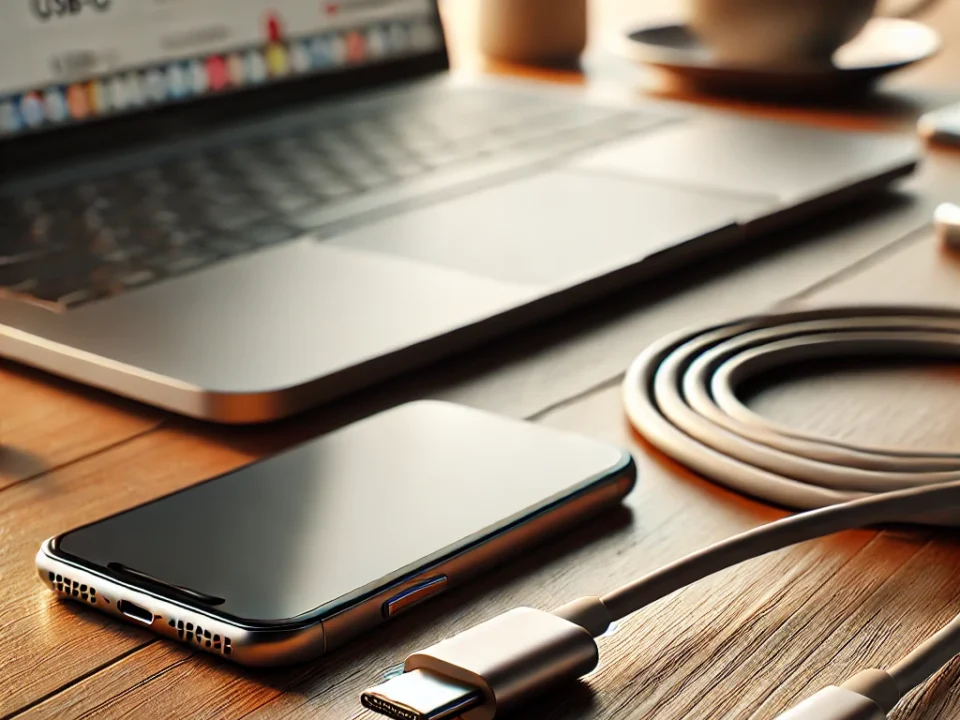
The Essential Role of Charging Cables in Modern Life
2024-11-06
The Key Advantages and Features of USB Data Cables
2024-11-11Introduction to USB Connectors
Universal Serial Bus (USB) technology has greatly influenced the way we connect devices. It has become a critical standard for data transfer and power supply. Initially developed in the mid-1990s, USB aimed to simplify computer and peripheral device connections. It replaced many different connectors. USB connectors include Type-A, Type-B, and the newer Type-C. These have evolved to meet the changing needs of technology and users.
USB connectors allow devices such as keyboards, printers, external drives, and smartphones to communicate. Computers and chargers typically use Type-A connectors to connect external devices. Type-B connectors are more common in peripheral devices like printers and external hard drives. They ensure efficient data transfer. Each connector type serves a specific function, playing a vital role in USB technology.
Type-C connectors have grown in popularity due to their versatility. They support higher power levels and faster data transfer. However, this guide will focus on Type-A and Type-B connectors. These connectors remain relevant in many applications. Understanding these connectors is essential for users and manufacturers alike. This guide will help you appreciate the role of Type-A and Type-B in modern connections.
An Overview of Type-A Connectors
Type-A connectors play a key role in digital connectivity. They have a rectangular shape and are wider than other types. These connectors are widely used across many devices. Their design makes it easy for users to insert them in one direction.
Type-A connectors support data transfer across USB 1.1, 2.0, 3.0, and 3.1 versions. Speeds range from 1.5 Mbps to 10 Gbps, depending on the version. They are commonly used in external hard drives, flash drives, and other peripherals.
You will find Type-A connectors in devices like computers, laptops, and gaming consoles. They connect peripherals such as keyboards, mice, printers, and storage devices. Type-A connectors are essential in consumer electronics, maintaining an interconnected world.
Although newer connectors like Type-C are gaining popularity, Type-A remains widespread in many devices. Users who understand Type-A connectors can better manage their devices and connections. These connectors continue to play a significant role in modern technology.
A Deep Dive into Type-B Connectors
Type-B connectors are critical to connectivity, and they differ from Type-A in shape and function. These connectors are square-shaped with beveled corners. They are commonly used in peripheral devices like printers and external storage units. The design ensures a secure connection and reduces the risk of accidental disconnections.
Type-B connectors include variations like USB-B and USB-B Mini. The standard USB-B is used for larger peripherals, such as printers, to ensure stable data transfer. The USB-B Mini is smaller and used for portable devices like hard drives and cameras.
Type-B connectors are specifically designed for certain applications. Type-A connectors are typically found on host devices like computers or hubs. Type-B connectors are used for the device-side interface. This distinction helps prevent confusion and ensures proper data transmission. Knowing these connectors’ functions improves the user experience.
Comparative Analysis: Type-A vs Type-B
Type-A and Type-B connectors serve different functions. Type-A connectors are larger and rectangular, found on host devices like computers and laptops. They transmit data and power from the host to peripheral devices. In contrast, Type-B connectors are square-shaped with beveled corners. They are typically used in devices like printers and external hard drives.
When it comes to data transfer speeds, Type-A connectors can reach up to 5 Gbps or more, especially with USB 3.0. Type-B connectors can also achieve similar speeds with USB 3.0. However, they are often used in scenarios like printing files, where performance may vary depending on the device.
Regarding power delivery, Type-A connectors provide around 2.5 watts. Type-B connectors can deliver more power, which is essential for larger devices. This makes Type-B connectors ideal for devices that need more power to operate.
Choosing between Type-A and Type-B depends on the peripheral device’s needs. Type-A excels in versatility, while Type-B is ideal for niche applications. Understanding their roles helps users optimize their connectivity.
Understanding the Evolution of USB Standards
USB standards have evolved significantly, changing how devices connect and communicate. The journey began with USB 1.0 in 1996, which offered data transfer rates up to 12 Mbps. Type-A connectors became standard during this time. USB 2.0, introduced in 2000, boosted speeds to 480 Mbps, solidifying the role of Type-A and Type-B connectors.
USB 3.0 emerged in 2008, offering speeds up to 5 Gbps. It brought improvements to the Type-A connector design. USB 3.1, which debuted later, doubled speeds to 10 Gbps. Type-B connectors were also upgraded to support higher power delivery, enabling more powerful devices.
USB4, introduced in 2019, integrated Thunderbolt 3 features, supporting speeds up to 40 Gbps. While Type-C connectors are now more common, Type-A and Type-B connectors laid the groundwork for modern technology. They ensured backward compatibility with older devices.
Advancements in USB standards have brought faster speeds, better power delivery, and universal connectivity. As the connector landscape continues to change, the legacy of Type-A and Type-B connectors remains vital.
Common Misconceptions About USB Connectors
Several misconceptions about USB connectors persist. One is that Type-C is the only reliable option for modern devices. While Type-C offers benefits like a reversible design and faster transfer speeds, Type-A and Type-B connectors are still essential in many applications. Many devices, such as printers and computers, continue to rely on Type-A for compatibility.
Another misconception is that Type-B connectors have become obsolete. This is not true. Type-B connectors continue to play a critical role in devices like printers, which often use them to connect directly to computers. While Type-C interfaces are gaining traction, Type-B connectors are still essential in many settings, especially in professional environments.
Some users also assume that Type-C connectors automatically guarantee superior performance. While Type-C supports high data throughput, Type-A and Type-B connectors have their own advantages for specific needs. Type-A connectors, for example, have been a standard for years and ensure compatibility with countless devices. Therefore, understanding the differences between these connector types is crucial for users navigating USB technology.
Practical Applications of Type-A and Type-B Connectors
Type-A and Type-B connectors continue to play vital roles across various sectors, proving their ongoing relevance even as Type-C connectors rise in popularity. Type-A connectors are common in consumer electronics, such as laptops, desktop computers, and gaming consoles, where they connect peripherals like keyboards, mice, and external hard drives. Their widespread use emphasizes their value in environments that require compatibility with existing technologies.
In industrial settings, Type-B connectors are indispensable. Devices like printers and data acquisition systems often use Type-B connectors to ensure reliable data transfer in demanding environments. For example, a factory might rely on Type-B USB connectors in its machinery to transfer operational data to management systems, ensuring that performance is consistently monitored.
Automotive applications also rely on Type-A and Type-B connectors. Modern vehicles use them for infotainment systems, diagnostic tools, and charging ports. For instance, Type-A USB ports in car dashboards allow drivers to charge devices or play music from their smartphones. This adaptability shows that, even as Type-C technology advances, Type-A and Type-B connectors remain integral to everyday devices and applications.
The continued relevance of these connectors across diverse industries underscores their importance in maintaining connectivity in consumer electronics, industrial systems, and automotive technologies. This enduring presence reflects the need for users to understand all available connector types in today’s rapidly evolving technological landscape.
Future of USB Connectors
The USB technology landscape is evolving rapidly, with Type-C connectors leading the way due to their versatility and capabilities. However, Type-A and Type-B connectors will still play crucial roles in this changing environment. Despite Type-C’s rise, these older connectors remain embedded in many devices and systems in consumer and industrial applications.
Type-A connectors, commonly used in host devices like computers and chargers, will continue to be important due to their broad compatibility with existing peripherals, such as keyboards and flash drives. As technology advances, manufacturers may focus on enhancing Type-A connectors to support higher transfer speeds and better power delivery.
Type-B connectors, often used in printers and external hard drives, may also evolve. Hybrid models combining Type-B’s traditional design with Type-C functionalities could emerge, ensuring compatibility for users transitioning to newer technologies.
Both Type-A and Type-B connectors will likely coexist alongside Type-C, providing users with more flexible options for their devices. The future of USB connectors will involve improved adaptability, allowing seamless communication regardless of the connector type. While Type-C will lead the charge, Type-A and Type-B connectors will remain relevant, meeting the needs of various devices and users.
Conclusion: Making Informed Choices About USB Connectors
In today’s technological landscape, understanding the variety of USB connectors available is crucial for making informed decisions about your devices. While Type-C has gained significant popularity for its advanced capabilities and versatility, it is essential not to overlook the importance of Type-A and Type-B connectors. This complete guide highlights the distinctions, advantages, and applications of each connector type, ensuring that users can select the most suitable option based on their specific needs.
Type-A connectors are ubiquitous in the realm of USB technology. They are the standard rectangular connectors found on many devices, including laptops and chargers, making them essential for compatibility with a vast array of peripherals. On the other hand, Type-B connectors, characterized by their square shape, are commonly used for devices such as printers and external storage. Both of these types offer reliable data transfer and power supply options, demonstrating that they remain relevant even amidst the rise of Type-C connections.
The choice between Type-C, Type-A, and Type-B connectors should be influenced by factors such as device compatibility, required data transfer speeds, and the specific usage scenarios you might encounter. For instance, if you frequently connect older devices or peripherals, Type-A may be your best bet. Alternatively, if you need high-speed data transfer and a reversible design, Type-C could be optimal. Ultimately, being informed about these connectors enables you to maximize the functionality of your technology in an increasingly connected world.
In conclusion, while Type-C offers numerous advantages, Type-A and Type-B connectors continue to play vital roles in our day-to-day interactions with technology. By understanding the distinct features and applications of each type, users can make educated choices that best suit their needs while ensuring compatibility and performance.
Wireless charging is something you hear but never see!
Are these functions of data cables practical?





